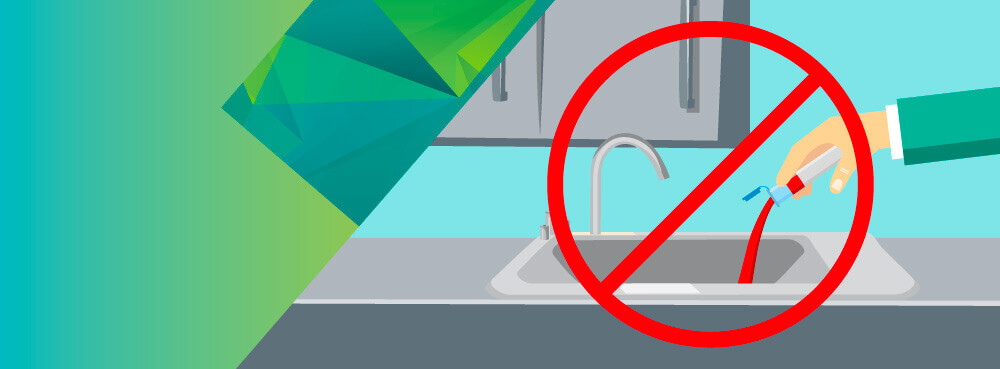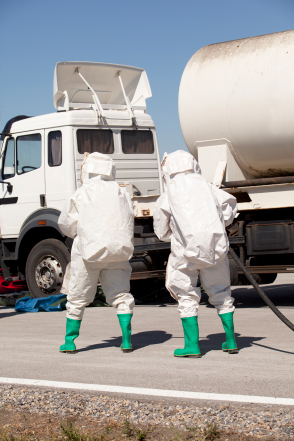Leading Industrial Wastewater Treatment Solutions: Ensuring Compliance and Performance
Leading Industrial Wastewater Treatment Solutions: Ensuring Compliance and Performance
Blog Article
Just How Liquid Garbage Disposal Functions: A Detailed Review of Techniques and Technologies Utilized

Overview of Liquid Waste Types
The complexity of liquid waste kinds demands a complete understanding of their attributes and effects for disposal. Fluid waste can broadly be classified into numerous types, including commercial, local, agricultural, and contaminated materials. Each group exhibits unique properties, calling for specific administration approaches to reduce environmental and health and wellness threats.
Industrial fluid waste originates from producing procedures and often consists of an array of contaminants, such as heavy metals, solvents, and natural substances. Metropolitan fluid waste, mainly making up wastewater from houses and business facilities, has raw material, nutrients, and virus (industrial wastewater treatment). Agricultural fluid waste, consisting of drainage from farms, may contain fertilizers, pesticides, and pet waste, posing risks to water quality and environments
Dangerous fluid waste is identified by its poisoning, sensitivity, or prospective to cause harm. This category includes materials like acids, bases, and particular chemicals that require rigorous handling and disposal procedures. Comprehending these diverse liquid waste kinds is crucial for developing efficient disposal approaches and making sure compliance with ecological laws. Correct classification and characterization are vital for executing appropriate therapy techniques and decreasing the damaging effect on public health and the atmosphere.
Physical Treatment Approaches

Screening is the initial action, where bigger bits and debris are removed from the liquid waste using screens or grates. This process protects downstream tools from damages and makes certain smoother procedure. Adhering to testing, sedimentation makes use of gravitational pressure to different solids from liquids. In sedimentation tanks, heavier fragments settle near the bottom, forming a sludge layer, while the clarified fluid can be additional treated.
Purification is one more vital method that involves passing the liquid with porous products, such as sand or membrane layers, to capture smaller sized bits. This action improves the quality of the liquid, making it suitable for succeeding treatment processes.

Chemical Treatment Methods
Chemical treatment techniques are necessary for effectively handling liquid waste, specifically in resolving liquified and colloidal impurities that physical techniques might not appropriately get rid of. These techniques make use of different chemical agents to reduce the effects of, precipitate, or transform dangerous materials right into much less dangerous kinds.
One typical approach is coagulation and flocculation, where chemicals such as alum or ferric chloride are included in advertise the aggregation of suspended particles. This procedure enhances sedimentation, enabling less complicated elimination of the resulting sludge. In addition, oxidation processes, using representatives like chlorine or ozone, are used to damage down complex organic substances and virus, making the waste much safer for discharge or further therapy.
Neutralization is an additional important method, which adjusts the pH of acidic or alkaline waste streams to neutral levels, preventing possible damage to downstream systems and the environment. Moreover, progressed oxidation processes (AOPs) make use have a peek at this site of combinations of oxidants and ultraviolet light to degrade relentless contaminants, achieving a greater level of therapy efficiency.
Biological Treatment Procedures
Biological therapy processes play an essential duty in the administration of fluid waste by using microbes to break down raw material and minimize pollutant levels. These processes can be broadly classified right into anaerobic and cardio therapies, each using particular microbial areas to accomplish reliable waste degradation.
Aerobic therapy involves the use of oxygen to promote the break down of natural products by bacteria. This process is generally implemented in triggered sludge systems, where aeration containers provide a conducive atmosphere for microbial development, resulting in the oxidation of organic toxins. The resultant biomass can be separated from treated effluent with sedimentation.
In comparison, anaerobic therapy occurs in the absence of oxygen, counting on various microorganisms to damage down raw material. This method is especially helpful for high-strength waste, as it creates biogas, a renewable resource source, while decreasing sludge production. Technologies such as anaerobic digesters are often employed in commercial and local applications.
Both anaerobic and cardio biological treatments not only reduce the environmental impact of liquid waste yet also promote source recuperation, making them essential elements of lasting waste administration methods. Their performance, efficiency, and versatility sustain their widespread implementation throughout various industries.
Arising Technologies in Disposal
Ingenious strategies to fluid waste disposal are quickly evolving, driven by advancements in modern technology and a boosting emphasis on sustainability. Amongst these emerging technologies, membrane bioreactors (MBRs) have actually gotten traction for their ability to incorporate biological therapy with membrane purification, causing high-quality effluent that can be recycled in various applications. MBRs allow smaller sized footprints and extra effective procedures compared to standard systems.
Another appealing development is using anaerobic food digestion combined with nutrient healing modern technologies, which not only deals with fluid waste but likewise creates biogas and recovers important nutrients like nitrogen and phosphorus. This twin advantage enhances resource effectiveness and lowers environmental effect.
In addition, advanced find out here oxidation processes (AOPs) are being embraced for the deterioration of intricate organic pollutants. These techniques use effective oxidants and stimulants to break down pollutants at the molecular degree, supplying a highly effective solution for difficult waste streams.
Additionally, the assimilation of expert system and device understanding in waste monitoring systems is maximizing functional performance and anticipating upkeep, bring about reduced prices and boosted ecological conformity. These innovations show a considerable shift towards more lasting and efficient liquid waste disposal techniques.
Final Thought
In final thought, reliable Visit This Link liquid waste disposal demands a thorough understanding of different strategies and technologies. By continuously progressing these methods, it becomes feasible to address the expanding difficulties associated with liquid waste, eventually contributing to ecological protection and resource recuperation.
Liquid waste disposal is an essential element of ecological management, needing a thorough understanding of numerous techniques and innovations customized to various waste kinds. Liquid waste can extensively be classified right into several types, including commercial, municipal, agricultural, and harmful waste. Agricultural fluid waste, consisting of runoff from farms, may have fertilizers, pesticides, and animal waste, posturing risks to water high quality and ecosystems.
Various physical treatment methods play a critical function in handling fluid waste successfully - industrial wastewater treatment.In verdict, reliable fluid waste disposal necessitates an extensive understanding of various techniques and technologies
Report this page